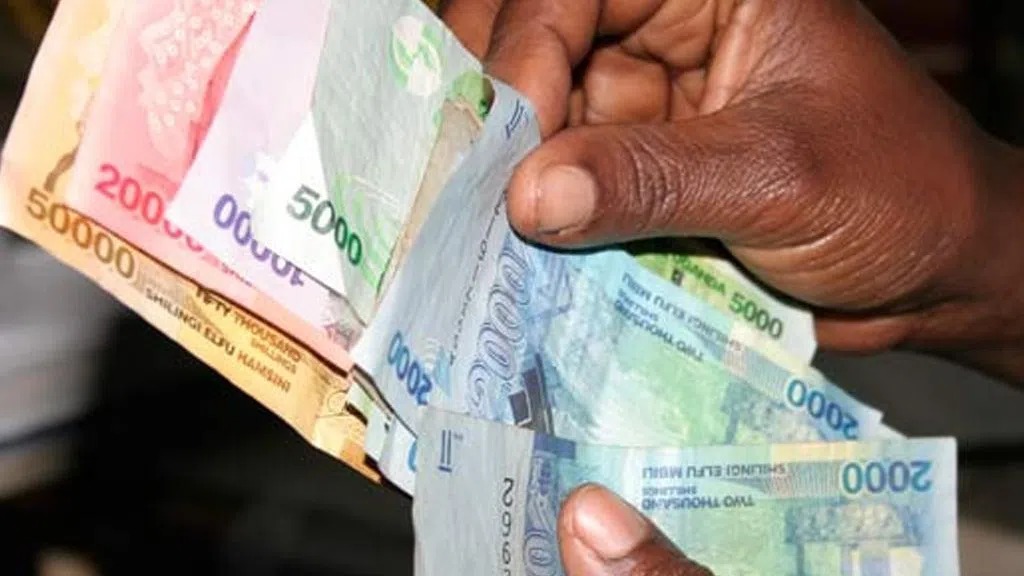What Is the Currency in Uganda and How Should I Manage Money? | Complete 2026 Uganda Travel Money Guide
To travel to Uganda, the Pearl of Africa, is to enter a land of untamed beauty, generous smiles, and rhythms that move at their own calm pace. It is a destination where lush rainforests meet endless savannahs, where the Nile cuts through mist-shrouded valleys, and where wildlife thrives alongside vibrant cultures. Yet, behind the beauty and adventure lies a very practical question that every traveler must address — how does money work in Uganda, and what is the best way to manage it?
Understanding Uganda’s currency, exchange systems, payment methods, and spending culture can make the difference between a smooth, confident journey and one filled with unnecessary confusion. The experience of safari, city exploration, and local market discovery all depend on how easily one navigates financial logistics. Money in Uganda is not complicated, but it works differently from what many first-time visitors may expect.
This comprehensive guide explores Uganda’s currency, financial habits, payment systems, and money management tips, helping travelers make informed decisions. Whether planning a gorilla trekking adventure in Bwindi, a boat cruise in Murchison Falls, or a cultural visit in Kampala, understanding how to handle money will ensure you focus on what matters most — the experience itself.
The Ugandan Currency: An Overview
Uganda’s official currency is the Ugandan Shilling (UGX). Introduced in 1966 to replace the East African Shilling, it has evolved into a symbol of national stability and identity. The Ugandan shilling is widely used and accepted throughout the country, forming the foundation of all local transactions, from high-end lodges to small village markets.
The currency exists in both notes and coins. The notes include denominations of 1,000, 2,000, 5,000, 10,000, 20,000, and 50,000 shillings, each distinguished by color and cultural imagery depicting Uganda’s history, wildlife, and national symbols. Coins are used for smaller transactions and come in denominations of 50, 100, 200, 500, and 1,000 shillings.
The exchange rate fluctuates regularly depending on global and regional economic conditions, but as of recent trends, 1 US Dollar (USD) is equivalent to roughly 3,700 to 3,900 Ugandan Shillings (UGX). The Euro, British Pound, and Kenyan Shilling are also exchangeable, though the US dollar remains the most widely used foreign currency in Uganda for tourism and business.
When handling Ugandan currency, it’s useful to remember that cash transactions dominate daily life. Although urban centers have adopted electronic payments and banking systems, rural regions and local establishments still rely heavily on cash.
The Role of the Ugandan Shilling in Everyday Life
The Ugandan Shilling is deeply woven into the country’s social and economic life. In cities like Kampala, Entebbe, and Jinja, it flows easily between modern establishments, ATMs, and mobile banking apps. In smaller towns and rural areas, however, cash remains the most reliable medium.
For travelers, this means that carrying local currency is essential, especially when exploring national parks, rural lodges, and craft markets. While many hotels, tour companies, and upscale lodges accept foreign currency or credit cards, local restaurants, shops, and transport services usually deal strictly in Ugandan shillings.
It is common to see small-scale transactions — like buying bottled water, snacks, or handmade souvenirs — conducted entirely in cash. In such exchanges, foreign currency is not accepted, and even large bills (like 50,000 UGX notes) may be difficult to break in rural communities. Carrying a mix of denominations ensures smooth transactions and reduces dependence on urban banking facilities.
The Importance of US Dollars in Uganda
Although the Ugandan Shilling is the official currency, the US Dollar plays an important parallel role in the country’s tourism economy. Many high-value transactions, such as gorilla trekking permits, park entry fees, and luxury lodge payments, are quoted and payable in dollars.
However, not all dollar notes are accepted equally. Ugandan banks and businesses are extremely strict about the physical condition and issue year of US dollar bills. Notes that are torn, faded, marked, or older than 2009 are often rejected. This is due to anti-counterfeit measures and banking standards that prefer clean, crisp notes printed in recent years.
For this reason, travelers are strongly advised to carry newer, undamaged US dollar bills in denominations of $50 or $100, as these offer better exchange rates than smaller notes. Having a few smaller notes ($10 or $20) is also useful for tipping, small payments, or emergencies.
Exchanging Money in Uganda
Money exchange in Uganda is straightforward, though it requires attention to detail and a bit of local insight. Currency can be exchanged at banks, forex bureaus, and airports, with rates that vary slightly between locations.
Forex bureaus — specialized currency exchange offices — are the most convenient and reliable places to exchange foreign money. They are abundant in Kampala, Entebbe, and major tourism hubs like Fort Portal, Kabale, and Jinja. Forex bureaus typically offer better rates than airports or hotels and do not charge commissions on transactions.
When exchanging large amounts, travelers should verify rates at two or three bureaus before settling on one, as competition can result in favorable deals. Counting money carefully and ensuring notes are genuine and undamaged is a key part of any exchange transaction.
ATMs are another efficient option for accessing local currency. Most Ugandan banks are part of international networks that accept Visa, Mastercard, and sometimes American Express. ATMs in cities are reliable, but they can occasionally run out of cash or experience downtime during power outages in smaller towns. Therefore, carrying backup cash remains essential.
Managing Money While Traveling
Money management in Uganda blends old-world practicality with modern convenience. The balance between cash, card, and mobile money systems defines how most visitors navigate their financial needs during their stay.
Cash Management
Carrying cash in Uganda requires planning. Because some areas lack ATMs and card facilities, having sufficient cash ensures flexibility and independence. It is advisable to carry money in small denominations to avoid difficulty finding change, especially in rural markets.
For security, cash should be kept in multiple safe locations — some in a wallet for daily use and the rest in a money belt or secure pouch. Most safari lodges and hotels offer safes for valuables, and using them is highly recommended.
While crime against tourists is rare in well-managed tourism areas, petty theft can occur in crowded places. Exercising discretion and avoiding public displays of money is a sensible precaution.
Credit and Debit Cards
Credit and debit cards are increasingly accepted in urban Uganda, particularly in high-end establishments. Hotels, airlines, and tour companies often accept Visa and Mastercard, but smaller lodges and rural accommodations may not.
Transaction fees, however, can be higher than expected, often ranging from 3% to 5%. Some lodges pass these fees onto guests, so confirming payment methods in advance helps avoid surprises. Internet connectivity in remote regions may also affect card transaction reliability, which is why travelers should never depend solely on plastic payments.
Mobile Money: Uganda’s Digital Revolution
Uganda is one of Africa’s pioneers in mobile money, a digital payment system that allows users to send, receive, and store money using mobile phones. Services such as MTN Mobile Money, Airtel Money, and Africell Money dominate daily financial life, especially among locals.
While mobile money is primarily used by Ugandans, visitors can also benefit from it. Some tour operators, shops, and lodges accept payments through these platforms, and travelers staying for extended periods may find it convenient to obtain a local SIM card with mobile money functionality.
The system is secure and widely available, even in areas without traditional banking infrastructure. It reflects Uganda’s growing financial inclusivity, allowing people in the most remote areas to transact efficiently.
Tipping Etiquette and Cultural Norms
Tipping in Uganda is not mandatory but is deeply appreciated as a gesture of gratitude for good service. The practice is common in the tourism industry and contributes significantly to the livelihoods of guides, porters, and hospitality staff.
In high-end lodges and restaurants, service charges may already be included in the bill, but leaving a small additional tip for exceptional service is always welcomed. In rural or community-based tourism experiences, tips can have an even greater impact, often shared among teams that support your visit.
When tipping guides or porters during activities such as gorilla trekking, chimpanzee tracking, or game drives, it is customary to use Ugandan shillings or clean US dollar bills. This ensures convenience for recipients and reinforces responsible travel practices.
Budgeting for Uganda: What to Expect
Uganda offers remarkable flexibility in budgeting, accommodating both luxury travelers and budget-conscious explorers. Costs depend heavily on itinerary, accommodation style, and chosen activities.
Luxury safaris in high-end lodges can range from $500 to $1,000 per person per day, including full-board meals, guided tours, and domestic flights. Mid-range safaris average between $200 and $400 per day, offering excellent comfort at a more moderate price. Budget travelers can find affordable lodges and guesthouses for $50 to $150 per day, particularly in smaller towns and near community tourism centers.
Key expenses beyond accommodation include park entrance fees, permits, and transportation. Gorilla trekking permits cost $800 per person, while chimpanzee tracking ranges from $100 to $250, depending on the location. National park fees typically fall between $40 and $50 per day.
Souvenirs, local meals, and small excursions are reasonably priced. A meal at a local restaurant may cost the equivalent of $5 to $10, while crafts or handmade jewelry range from $10 to $50, depending on quality and craftsmanship.
ATMs and Banking in Uganda
Uganda’s banking sector has grown rapidly in recent years, with a wide network of ATMs in cities and major towns. Banks such as Stanbic Bank, Absa (formerly Barclays), Centenary Bank, and Equity Bank provide reliable services for foreign visitors.
However, not all ATMs accept international cards, and connectivity issues occasionally affect rural branches. To avoid inconvenience, it is best to withdraw sufficient cash in major centers like Kampala or Entebbe before heading into remote regions.
When using ATMs, travelers should be aware of withdrawal limits — often capped at UGX 400,000 to 700,000 per transaction — and international withdrawal fees charged by both local and home banks. Using ATMs during daylight hours and avoiding isolated locations further enhances safety.
Money and Conservation: How Tourism Spending Supports Uganda
Money in Uganda carries more than purchasing power — it carries purpose. Tourism contributes directly to conservation and community development, making every dollar spent an act of preservation.
Park entry fees and permit revenues fund the Uganda Wildlife Authority (UWA), which manages anti-poaching patrols, ranger salaries, and wildlife research. A portion of these revenues also supports communities bordering national parks, funding schools, clinics, and infrastructure.
When travelers exchange money, pay guides, or buy local crafts, their spending sustains livelihoods and promotes peace between people and wildlife. Understanding this connection turns money management into a moral act — proof that tourism can protect rather than exploit nature.
Handling Money in Rural and Remote Areas
While Uganda’s main tourism regions are well-equipped, remote parks such as Kidepo Valley, Semuliki, or Rwenzori Mountains may lack ATMs, forex bureaus, or card facilities. Travelers heading to these destinations should carry enough local currency to cover all expenses, including fuel, meals, and guide fees.
Local communities often operate on informal economies where barter or cash are the only accepted forms of exchange. Having smaller notes avoids the frustration of needing change and enhances interactions with locals, who often view fair cash transactions as gestures of respect and understanding.
Avoiding Common Money Pitfalls
Traveling in Uganda is generally smooth, but certain habits can prevent minor inconveniences. Avoid exchanging money with street vendors offering slightly higher rates, as counterfeit currency remains a risk. Use only authorized forex bureaus or hotel cashiers.
When withdrawing from ATMs, shielding your PIN and verifying account charges prevents unnecessary losses. Travelers should also store emergency funds separately, ensuring they are accessible in case of misplaced wallets or card issues.
It is equally important to inform your home bank of travel dates to avoid card blocks triggered by unusual foreign transactions. With these precautions, managing money in Uganda becomes effortless and secure.
Cultural Insights: The Human Side of Currency
Uganda’s relationship with money reflects its broader cultural values — honesty, patience, and personal connection. Transactions often come with smiles, conversation, and genuine interaction. Bargaining in local markets is part of this dance, not a confrontation but an exchange built on mutual respect.
Travelers who engage politely and show appreciation for local craftsmanship often receive fairer prices and better service. Money, in this context, becomes not merely a means of purchase but a bridge between cultures. The value of a transaction lies as much in the shared experience as in the object exchanged.
Future of Money in Uganda: A Changing Economy
Uganda’s financial landscape is evolving rapidly. The government’s investment in digital banking, mobile payments, and cashless infrastructure continues to expand. With a youthful, tech-savvy population, Uganda is moving toward greater financial inclusion and transparency.
For travelers, this evolution means growing convenience. More lodges, restaurants, and tour operators now accept electronic payments. Contactless systems, QR codes, and mobile transfers are gradually becoming the norm. Still, cash retains cultural importance and practicality, making Uganda a fascinating blend of tradition and innovation.
Conclusion: Managing Money with Confidence in the Pearl of Africa
Understanding Uganda’s currency and money management systems is essential for a seamless journey through this enchanting country. The Ugandan Shilling remains the lifeblood of local commerce, while the US Dollar connects the tourism industry to the global economy. With a balance of both, and a few smart strategies, travelers can navigate Uganda with confidence, security, and cultural sensitivity.
Money here is more than a tool — it is a key to connection. Every note exchanged, every service tipped, and every souvenir purchased contributes to a broader ecosystem of conservation and community development. Uganda rewards those who spend wisely and respectfully, offering not only value for money but value for meaning.
For travelers seeking a trustworthy partner to handle every aspect of their adventure — from budgeting and logistics to authentic experiences — it is best to book their Africa tours and safaris with WildHorn Africa. With expertise rooted in local knowledge and a passion for ethical travel, WildHorn Africa ensures that every journey is smooth, transparent, and unforgettable. Managing money becomes effortless, allowing the traveler to focus entirely on what truly matters — the rhythm of Uganda’s wilderness and the warmth of its people.





 WildHorn Africa – Authentic and unforgettable tours across Africa, guided by local experts who know the land, wildlife, and culture best.
WildHorn Africa – Authentic and unforgettable tours across Africa, guided by local experts who know the land, wildlife, and culture best.


